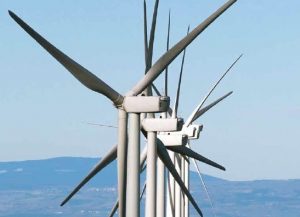DNV GL’s project FORCE (For Reduced Cost of Energy) has identified potential savings of at least 10 percent of the cost of offshore wind energy, if an integrated approach to four market-ready technologies is adopted. The cost savings identified by the FORCE team could be exploited by industry right now if industry shifts to collaborative design, engineering and procurement processes.
Project FORCE was set up to explore how the idea of “integrated design” could reduce offshore wind costs when applied to the wind turbine and its supporting structure for a typical project. Twenty-five DNV GL expert engineers from disciplines including cost modeling, offshore load calculations, blade design, controller design and structural design were brought together to work on the problem. This multi-disciplinary project has revealed the magnitude of the potential savings that a “joined-up” approach to the design of large offshore wind turbines and their support structures could achieve. Through the combination of four technologies (integrated design, relaxation of frequency constraints, enhanced control systems and slender, faster blades) aggregate cost savings of over 1 billion euros ($1.35 billion) in NPV terms could be achieved over the next decade.
However, these benefits can only be unlocked if the industry’s approach to engineering, design and procurement changes. DNV GL advocates a shift towards collaborative practices in order to address the misalignment of design-risk and cost-saving reward, which is currently blocking the cost-cutting power of near-market innovation.
Executive Vice President for Renewables Advisory at DNV GL – Energy, Dr. RV Ahilan commented: “The cost savings identified by the FORCE team could be exploited by industry right now. The problem is the misalignment between the design-risk of the changes needed and the cost-reduction reward delivered by those changes. Whilst the former mostly lies with the wind turbine manufacturer, the latter benefits the complete offshore wind asset. The technology is there – we now need to smash down the commercial barriers to make it happen.”
In order to remove these barriers, DNV GL believes a rapid maturation of industry practice is needed via an integrated and collaborative approach to design, engineering and procurement. DNV GL invites expressions of interest in a potential Joint Industry Project (JIP) to accelerate such a transition.
It is DNV GL’s hope that if the collaborative approach to engineering, design and procurement championed in this report can be applied in a broader sense, there will be a change of mind-set toward building and operating offshore wind “power stations” rather than collections of individual wind turbines — offering cost reduction benefits well beyond the minimum 10 percent identified in the work of project FORCE.
Dr. Tim Camp, Head of Turbine Engineering at DNV GL – Energy comments: “Ultimately healthy levels of collaboration are as important as healthy levels of competition. Whilst we have made significant progress on improving supply chain competition over the last few years, it is now time that we start acting like a mature industry — embracing both collaboration and integration.”



























